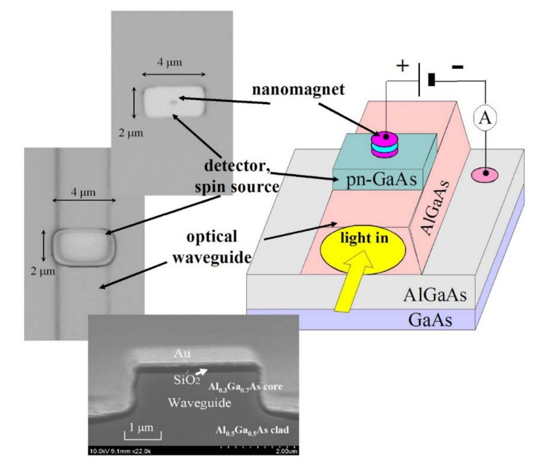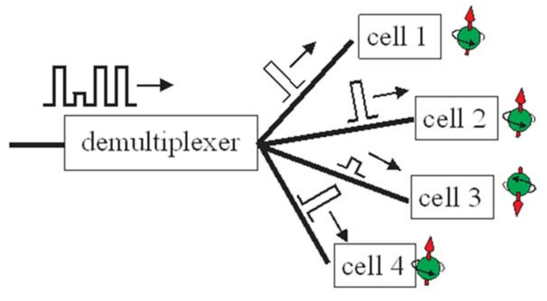R&D: High-Speed Non-Volatile Optical Memory, Achievements and Challenges
May be above 1Tb/s
This is a Press Release edited by StorageNewsletter.com on January 18, 2017 at 3:05 pmElectronics (special issue Spin Optoelectronics) has published an article (PDF) written by Vadym Zayets, Spintronics Research Center, National Institute of Advanced Industrial Science and Technology (AIST), Tsukuba 305-8568, Japan.
Figure 1. Recording mechanism of a high-speed memory, which consists of two steps.
High-speed Step 1: Demultiplexer separates each data pulse
in the package into an individual memory cell;
Moderate-speed Step 2: Each-pulse is stored in each cell for long-time storage.
Figure 2. Memory cell of a prototype fabricated on GaAs substrate. The transparent AlGaAs waveguide is used to deliver optical pulses to the memory cell. The p-i-n GaAs photodetector absorbs the optical pulses. It converts spin information in an optical pulse into the spin polarization of photo-excited electrons. The data is stored as a magnetized direction in the nanomagnet, which is fabricated on top of the detector. The nanomagnet is also used as a top electrode for the detector.

Abstract: “We have proposed, fabricated, and studied a new design of a high-speed optical non-volatile memory. The recoding mechanism of the proposed memory utilizes a magnetization reversal of a nanomagnet by a spin-polarized photocurrent. It was shown experimentally that the operational speed of this memory may be extremely fast above 1TBit/s. The challenges to realize both a high-speed recording and a high-speed reading are discussed. The memory is compact, integratable, and compatible with present semiconductor technology. If realized, it will advance data processing and computing technology towards a faster operation speed.“














 Subscribe to our free daily newsletter
Subscribe to our free daily newsletter

